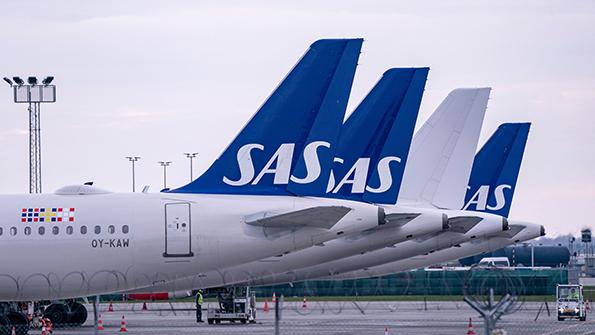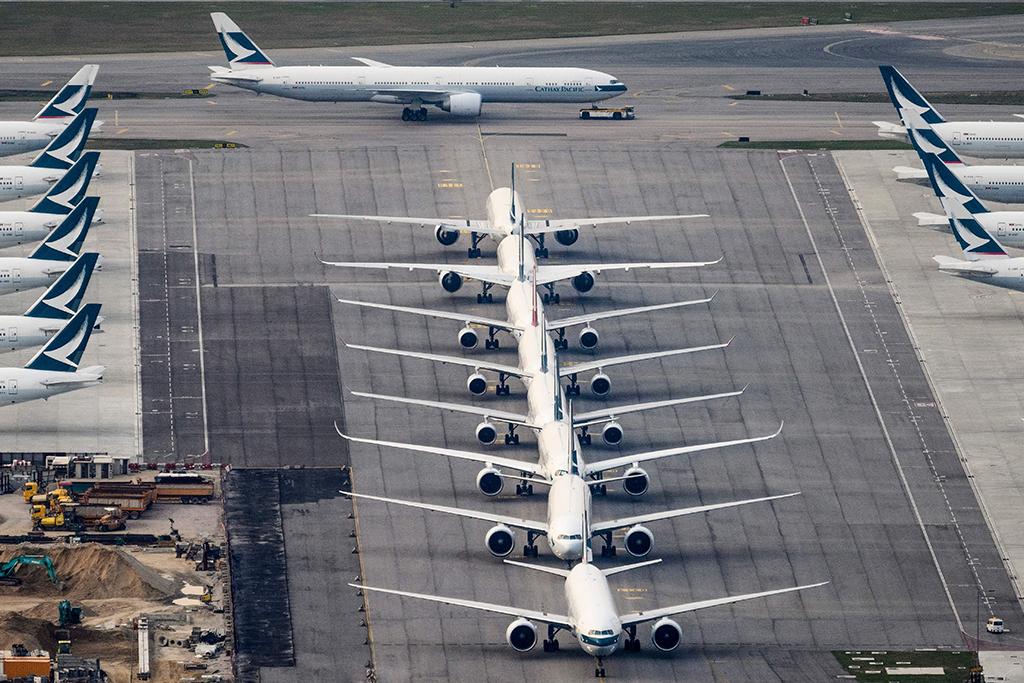Commercial Aftermarket Braces For Sharp Decline, Slow Recovery

Nothing scares the aftermarket world more than ramps packed with parked aircraft, since idle airframes and engines will not need much service. A close second: ramps with some spare aircraft that operators can tap when equipment they are using needs work, pushing off costly repairs and overhauls in the process.
Suffice it to say the global maintenance, repair and overhaul (MRO) community should brace for many unsettling days ahead.
- Idle fleet means a sharp drop in MRO services
- Airlines will seek to save money by avoiding MRO work if possible
- Oliver Wyman sees MRO market losing more than one-third of 2020 forecasted sales
The novel coronavirus pandemic has wiped out global passenger air travel demand. First detected in China in the last days of 2019, the COVID-19 illness caused by the virus spread rapidly in the country and nearby regions, leading domestic carriers to ground aircraft and international carriers to suspend routes.
As April approaches, China’s domestic airlines are showing signs of rebounding—aircraft utilization figures tracked by the Aviation Week Intelligence Network Fleet Discovery database showed rates approaching 50% of precrisis levels for the week ending March 27. While still depressed, the figures are substantially up from mid-February’s low of about 20%, which spanned 10 days.
While China offers a ray of hope, the rest of the world remains mired in the pandemic’s darkness. Dozens of carriers have stopped or plan to pause flying passengers altogether, including marquee names such as Emirates and Ryanair. India’s airlines are grounded until mid-April. In the U.S., global behemoths American Airlines, Delta Air Lines and United Airlines have parked most of their fleets, and further reductions could come in the days ahead if already-anemic domestic demand continues to weaken.
The ramifications for maintenance providers will be significant, and likely long-lasting. Hangars at overhaul shops are still largely full following a lengthy run of high demand due to consistently strong traffic and the Boeing 737 MAX grounding that took 800 new narrowbodies out of fleet plans. But thousands of aircraft parked for weeks at a time will soon translate into less demand for parts and overhauls, and likely a rash of work-order cancellations. Anything short of an instant, post-pandemic snap-back—a dubious outcome—will trigger a prolonged decline in MRO spending.

Consultancy Oliver Wyman’s prepandemic forecast for global MRO saw airlines spending nearly $91 billion on repairs and upgrades this year. The new best-case scenario envisions that figure reduced by $17 billion, or nearly 20%. That would require a recovery pace that puts most of the world’s region’s back to prepandemic activity levels within about a year, says Wyman Senior Vice President Dave Marcontell. The firm’s worst-case scenario slows the pace and doubles the recovery time. The resulting drag on 2020 would cut MRO spending by $35 billion, or more than one-third.
“The impact on MROs, especially smaller MROs, will be traumatic,” he says. “The airplanes simply aren’t flying.”
As airlines shift to prioritizing cash conservation, Marcontell expects them to stop maintenance work as quickly as they can. “Anything that requires money being spent—for material or third-party MRO services—will stop,” he says.
Rising airline activity will not solve all of the aftermarket’s problems. Even as travel demand rebounds, the need for MRO services will remain somewhat suppressed. The in-service fleets will be smaller, and operators will have idle aircraft and engines to swap into their networks in place of equipment that needs heavy checks or overhauls.
The practice of cannibalizing aircraft for used serviceable material also will skyrocket, Marcontell says. This will cut into new parts providers’ sales on certain platforms—such as the Boeing 737NG, Airbus A320ceo and Boeing 767s—all of which figure to see a jump in retirements but still have their places in the global fleet.
MRO providers are preparing for the new reality. GE Aviation, the world’s largest MRO provider by sales, announced plans to furlough 50% of its U.S.-based engine MRO staff for 90 days. Similar moves in its non-U.S. shops are expected, once the company determines how best to comply with applicable local labor provisions. Engine overhaul giant MTU has paused work in several shops, and nose-to-tail services provider Lufthansa Technik has readied a package of measures that it will match to the changing demand environment.
“With the outbreak of the corona crisis, nothing is the same as it was just a few weeks ago,” says Johannes Bussmann, chairman of Lufthansa Technik’s executive board. “Everything depends on the duration of the crisis and how our customers will recover from it.”
AAR Corp. the industry’s largest independent MRO provider, is consolidating some facilities and cutting staff.
“Right now, we have a fair amount of work in the hangars,” says AAR CEO John Holmes. “They’re largely full, but we anticipate a meaningful decline in that work as we head toward the summer. We’re getting different information out of different customers at this time in terms of the schedules that they’re putting together.”
Many smaller shops will need more than a smaller payroll—they will require cash. In the U.S., the Aeronautical Repair Station Association (ARSA) led a lobbying effort to ensure maintenance providers would be eligible for industry loans and grants that U.S. lawmakers approved as part of a $2 trillion economic relief package. The bill lists repair stations alongside airlines and ticket agents as entities eligible for a $29 billion pot of aviation-specific loans.
ARSA is among several industry groups working with the U.S. FAA to quickly develop guidance that will help repair stations and other businesses stay in compliance with the regulations despite the pandemic’s new protocols restricting in-person meetings. The limits create problems for classroom training and in-person FAA inspections. The agency has issued a series of exemptions covering recurrent training requirements and is finalizing guidance that will expand the use of video feeds that inspectors can use to validate compliance.

